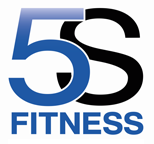Hopefully by now you’ve read the first blog and realised exactly what you need to do. Just need a few pointers on how to do it and do it efficiently. The Press requires good thoracic and shoulder mobility as well as a good degree of flexibility within the wrists. The vast majority of gym goers, squat queens and 40 minute mobility crossfitters don’t tend to have those problems so on we go.
The Press
Grip: The grip placement on the bar will vary from person to person, however the general rule is just outside the shoulders. Too narrow, mobility issues potentially creep in and we lose power; too wide, wrist issues can creep in and we also lose power. When it comes to wrapping the hands around the bar itself there’s two ways. The normal way, with the thumb wrapped around keeping the wrists fairly vertical, or the way which allows you to press more weight. This way is the thumbless grip where the bar sits on the edge of the palms. This requires more wrist flexibility but it perfectly aligns the forearms through the elbow joint allowing you to eke more out of your triceps. The only caveat is that its not as secure, however this is the grip I always use and never have an issue with it, so it is one I will always recommend.
The Rack Position: So we’ve sorted our comfortable, efficient, slightly wider than shoulder width grip out. Now we’ve got to get the correct start position. Dip down underneath the bar with a slight quarter squat and pop the bar out of the squat rack. The bar should be secured in two places. The first is in the hands with your already established grip, the second is the bar itself should be resting high up on the upper chest, about an inch below the clavicles. The elbows should be straight down with the chest high and the lats contracted. The feet shoulder width apart, weight back on the heels with the toes angled out slightly.
Get Tight: Remember all these cues before exploding that weight up through the ceiling. Tense the quads and the glutes for maximum stability and muscle recruitment. This is an all over compound lift, not an isolation exercise. Now for the valsalva effect. This is a breathing technique that mimics the same intra abdominal pressure as provided by using a weight belt. Suck in a big belly of air, pushing your abdominals out as opposed to bringing them in. Once the airs trapped, hold it there. This will increase spinal stability and make the lift a lot more secure when lifting heavier weights. Finally make sure to squeeze the bar tight in order to help fire up the nervous system ready to lift.
The Drive: Remember the aggressive mentality to put big weights up? Initiate the drive by slightly shrugging upwards while punching the triceps up. Violently push the bar up, not forward, once the bars cleared the top of your head be sure to punch your head forward through the gap and lock the weight out overhead.
There we have it! Last word on recovering the weight. Even if there’s bumper plates on the bar, don’t get into the mentality of dropping the bar after heavy triples, doubles or singles. Instead to get extra strength gains, emphasise the eccentric phase (lowering the bar) by slowly returning the bar to the start position.
The Push Press
This exercise is a main component in many strength and conditioning programs, and for vary good reason. The Push Press is an excellent all over power developer and, when done correctly, will allow you to put up to 10kg – 20kg more overhead. The added weight will help build up on that much needed core strength, all over stability and of course overload the shoulders for even more growth, especially if we accentuate the eccentric phase. The set up is much the same as the Press, with a slight difference on the drive portion of the exercise.
The Drive: At this stage we should all be set up and ready to go. Initiate the drive by dipping down slightly into a quarter squat position keeping the weight back on the heels. Don’t go too low, you’ll lose the snap of the stretch reflex and as a consequence lose potential energy. The dip shouldn’t be slow, once again too fast will separate you from the bar, which is never good. As soon as you’ve dipped down reverse the direction, drive your heels into the ground and use that power production to pop the bar off your chest, finishing by moving forward onto the toes to help with the final portion of the lift, driving the elbows up and punching your head through the gap. As the weights get heavier, you may want to add a slight knee bend in order to dip under the bar once it nears the top but once again, refrain from getting into this habit too soon as we want to develop strength, not take advantage of momentum.
So there we have it! Two staples of greatness, the Press and Push Press will accelerate both performance and physique. Both great ‘bang-for-your-buck’ exercises that will have great carry over to many exercises in the gym, mainly the bench press, and therefore should be a central focus of many programs.
Look forward to the next blog, The Jerk and variants. The final push for that great caveman feeling of putting something heavy over your head!

